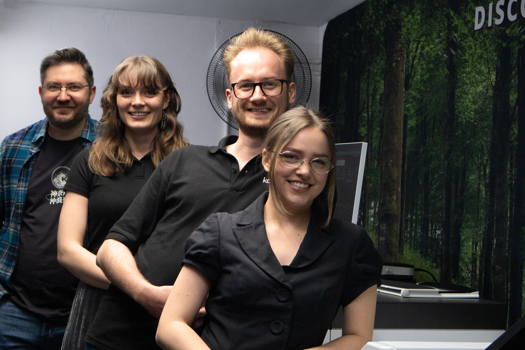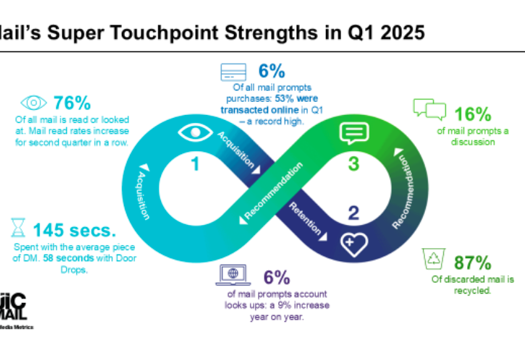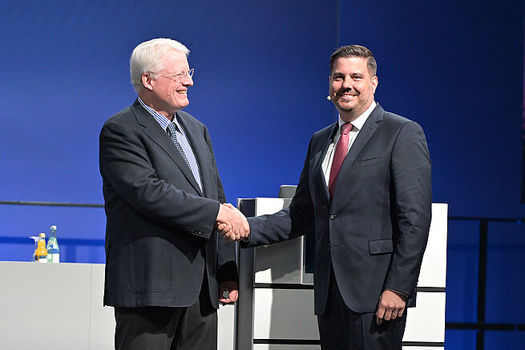Further from the world of UK packaging and POS printing you couldn’t get, you might think. And yet this is one of the more exotic locations Oxford University’s Charles Spence and his team have visited, contributing to findings that have the potential to radically alter packaging and POS design.
Spence is head of the University of Oxford’s Crossmodal Research Laboratory and a specialist in the design of multisensory foods, products, interfaces, and environments. He is just one of many academics, brand owners, retailers and packaging technologists contributing to a recent surge of interest in neuromerchandising, or rather how the subconscious brain affects buying decisions.
Spence’s work with the Himba people centred around testing whether a Western association of spiky shapes with fizzy drinks and sharper flavours, and rounded shapes with less abrasive, more natural flavours, is hardwired into all human brains, or the product of cultural conditioning. But this is just one of the unconscious associations Spence, and a growing army of neuromerchandising researchers, have been investigating of late.
Colour, texture, scent, shape and product and promotion placement – all are being discovered to have more of an impact on shopper behaviour than previously assumed. And all are being discovered to have such a profound impact specifically because of the powerful affect these stimuli have on the unconscious, non-rational, emotional part of the brain.
“Especially in Western society we grow up with an assumption that we are human because we are thinkers,” says Bert Martin Ohnemüller, founder of the Neuromerchandising Group. “But neuroscience tells us today that we’re human because we feel, and that 95% of decisions are made implicitly.
“Our non-conscious is responsible for the majority of our decision making and it is arguably this ability that has led to humans being the most successful species on earth,” agrees Tony Coates, director of MMR Research.
Not that the power of the unconscious is a completely new concept. “Neuromerch-andising has been around a long time but it dropped off at the end of the 1980s – these things often go in cycles, with people getting new jobs and so on,” reports Philip Adcock, managing director of shopper research organisation SBXL.
“And for many years emotion was hard to measure, so professors at universities just worried about the cognitive side. But people have now worked out that emotion is much more powerful than we thought, and we’ve now found ways of measuring it, understanding it and altering it.”
Stimulating work
It’s not only those qualities that print is capable of embodying that are being investigated. Experiments with a whole raft of stimuli are underway, including fragrances to change the way food tastes, and, slightly terrifyingly, music with sounds which direct shoppers unconsciously towards certain foods or, through pitch, to the upper or lower part of a shelf.
The jumping off point for much fragrance and sound work is the recent discovery that non-visual senses have much more impact on the subconscious than previously thought, and that these senses influence each other in a big way.
And yet, though some are experimenting with wider manipulation of store environments through sound and fragrance, most activity is currently in the area of packaging. This is because brands are much more open to this science than retailers.
“Unfortunately the last people to get onto this bandwagon are the retailers,” reports SBXL’s Adcock. “The mechanics of the supermarket are wrong for this, currently. Much of what would be good from a neuro perspective will be against their corporate rules. They’ll say things like ‘we don’t allow pictures in store, only words’.”
It stands to reason, then, that the areas most in brands’ control – namely logo, branding and packaging design – have been the first to show signs of a neuromerchandising revolution. Take the example of Andrex toilet paper. After six years of volume decline the brand decided, along with its design consultancy Elmwood, to dabble in neuromerchandising.
First off, Andrex packs were decluttered. This was inline with neuromerchandising findings that our brains don’t deal well with lots of information and so instinctively look for respite from visual overload. Then ‘cusp’ shapes, designed to imitate dangerous-looking claw shapes, were introduced to grab the instinctive eye, while subconscious nurturing impulses were tapped into by repositioning the Andrex puppy looking up and making direct eye contact. Sales of the core pack increasing by 13%, brand bonding 32% and the brand experienced record revenues.
Other examples of deliberately engineering packaging graphics to provoke a particular subconscious consumer reaction include the aforementioned spiky-versus-round shapes experimentation. Interestingly Spence and his team found that in fact the Himba people don’t associate angular shapes with bitter flavours in the same way as Westerners, suggesting this response has been programmed by many years of brand owners forging this link. Take a quick look at supermarket shelves, and the packaging of the likes of Newcastle Brown and Stella Artois, and it’s clear this association is nonetheless a strong one though.
Another principle people have been aware of for years, but now receiving renewed interest, is the effect of colour on how a product actually tastes, or ‘neurogastronomy’. Not only are brands such as Unilever experimenting with fragrance to make a cube of cheese taste saltier, for example, Spence reports that many more are now realising what 7UP apparently discovered years ago. That, in this specific case, yellower packaging makes the drink taste a lot more ‘lemon-y’ to most.
Print opportunities
Packaging printers might of course reasonably counter that pack graphics are not always within their control. But the Andrex case study is a great example of how a steady rise in interest in neuromerchandising and multisensory neuromerchandising, is impacting areas – specifically the pack’s shape, texture and other tactile qualities – that very much are.
Key to this redesign was the introduction of a matt white ink to accentuate the natural curves of the rolls and so alter the pack’s perceived shape. This was deemed so successful that Elmwood then introduced a more expensive soft-touch substrate to even further accentuate the association between Andrex and soft, caring qualities.
Plenty of other brands are also now experimenting more with shape and texture, with distinctive shape essentially a 3D version of the respite-from-visual-overload principle, according to Adcock. “People seek out a certain pack shape as a visual heuristic. You don’t have to do any more work with a distinctive shape – you’ve found it,” he explains.
Spence cites the example of a peach
body lotion where the texture and scent of the packaging were engineered to enhance the product’s natural feel. He cites too the example of indentations on Dove and other cosmetics bottles, and thermochromic ink on Heineken and Budweiser bottles, to direct the consumer to grasp the products in a certain way and associate them with ease of navigating the world.
“There is certainly a lot more innovative packaging around now, as it is much more affordable for brands to produce than 10 years ago, say, when people had to just change pack graphics,” reports Spence. “Now, because innovation is more affordable, you can look down the supermarket aisle and see products in all sorts of unusually shaped packaging.”
Brand engagement with neuromerchandising, and innovating their packaging accordingly, still varies wildly though, reports Adcock. So there is still plenty of room for packaging printers to highlight these ideas.
And though altering wide-format print inline with neuromerchandising principles is currently tricky due to the strict, non-neuromerchandising-friendly rules of retailers, attitudes are beginning to shift, he feels. “Supermarkets will have to relax these rules because it will sell more stuff,” he says, adding: “The opportunity is unbelievably huge.”
As this school of thought starts to filter through, retailers will hopefully start to facilitate more intelligent placement of in-store wide-format print, agrees Rob Smith, managing director at design agency Blacksheep, meaning there may be the opportunity for wide-format printers to recommend slightly different POS products than they would have before.
“From an evolutionary, foraging perspective, we’re programmed to look down. But stores more often hang stuff from the ceiling and expect people read it,” says Smith. An obvious innovation for printers to suggest, then, would be floor graphics.
Retailers might become more open to particularly creative use of these, adds Adcock, citing the example of lines on a shop floor to subtly direct consumers to follow certain routes.
“We’re realising that things experienced outside the store can be applied in store,” he says. “For example we’re all conditioned to follow lines as a result of driving. So if you put lines on the store floor people will do the same thing they’d do driving and pause in certain places if you make it look like a junction.”
The opportunities to exploit neuromerchandising findings are, then, as Adcock describes it, “huge”. Much more interest in this area means academics and brands alike are now using a wealth of skin temperature testing, EEG caps, eye tracking and MMR brain-scanning machines to work out how the subconscious brain dictates buying decisions, and how the consumer experiences the product once they have it.
Many brands have yet, potentially at their cost, to get involved however. Meaning particularly proactive printers could be bringing this to their attention, and indeed perhaps even getting involved with the research, through EFI SmartSign-esque technology, themselves.
Whether they lead on this or not, neuro-merchandising is certainly worth bearing in mind. Brands and printers need to not forget that, when it comes to shopping at least, instinctive emotion is king.










